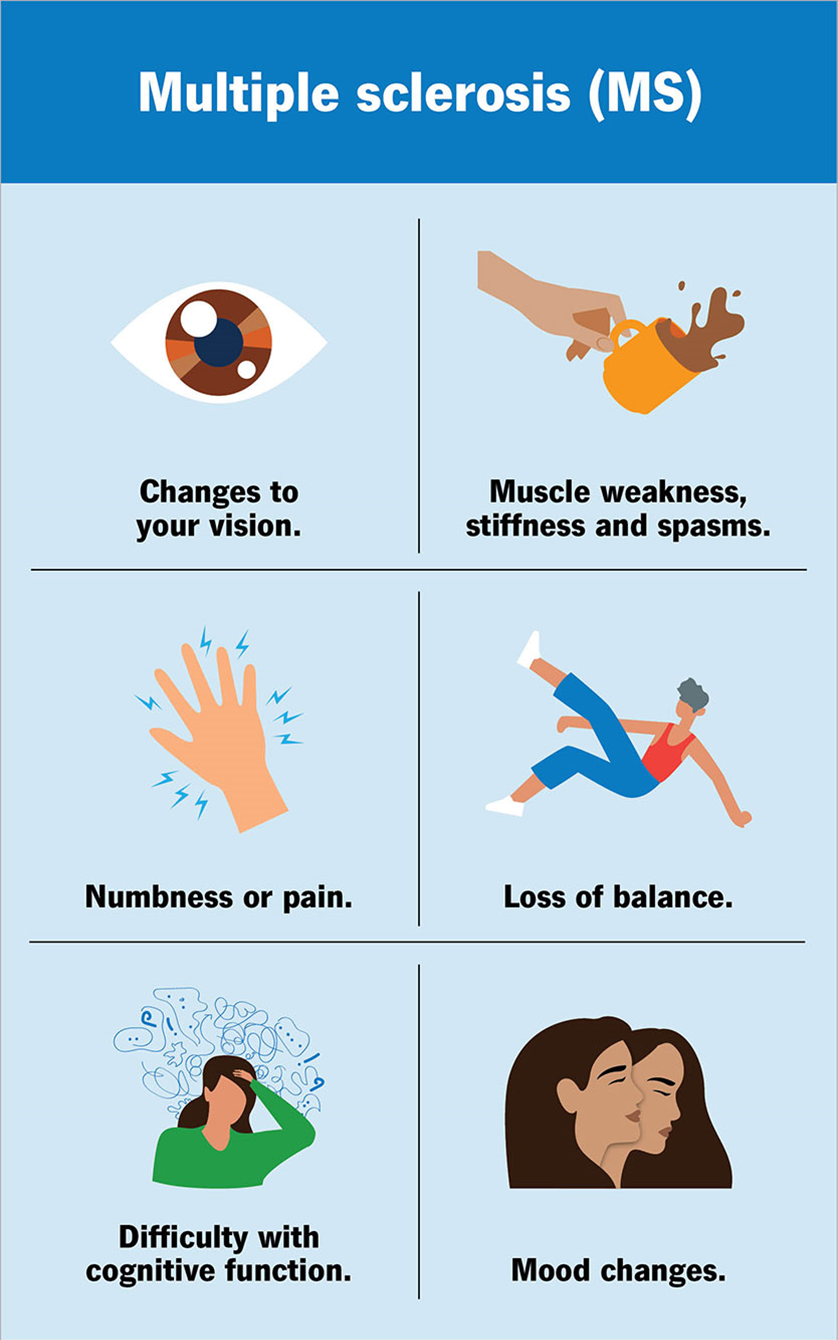A client is receiving baclofen for the management of symptoms associated with multiple sclerosis. To evaluate the effectiveness of this medication, what does the nurse assess?
Muscle spasms
Mood and affect
Appetite
Sleep pattern
The Correct Answer is A
Choice A reason:
Baclofen is primarily used to treat muscle symptoms caused by multiple sclerosis, including muscle spasms, stiffness, and pain1. It acts on the spinal cord nerves to decrease the number and severity of muscle spasms, thereby improving muscle movement2. The effectiveness of baclofen in managing multiple sclerosis symptoms is best evaluated by assessing the reduction in muscle spasms.

Choice B reason:
While mood and affect are important aspects of a patient’s overall well-being, they are not the primary indicators of baclofen’s effectiveness. Baclofen does not have a direct impact on mood and affect, as its main function is to relieve muscle spasms and improve muscle movement.
Choice C reason:
Appetite is not a primary concern when evaluating the effectiveness of baclofen. This medication is not known to significantly affect appetite. The main therapeutic goal of baclofen is to reduce muscle spasms and improve mobility in patients with multiple sclerosis.
Choice D reason:
Sleep pattern, although important for overall health, is not the primary measure of baclofen’s effectiveness. Baclofen’s primary role is to alleviate muscle spasms and improve muscle function. While it may have some impact on sleep due to its muscle-relaxing properties, this is not the main criterion for evaluating its effectiveness.
Nursing Test Bank
Naxlex Comprehensive Predictor Exams
Related Questions
Correct Answer is A
Explanation
Choice A: He is NPO until the speech-language pathologist performs a swallowing evaluation.
When a client is admitted with a stroke, especially one affecting the left side, there is a significant risk of dysphagia, or difficulty swallowing. This can lead to choking and aspiration, which can cause pneumonia and other complications. Therefore, it is crucial to keep the client NPO (nothing by mouth) until a speech-language pathologist can perform a thorough swallowing evaluation. This ensures that the client can safely swallow without the risk of aspiration. The speech-language pathologist will assess the client’s ability to swallow different textures and consistencies of food and liquids and provide recommendations for safe feeding.

Choice B: Be sure to sit him up when you are feeding him to make him feel more natural.
While sitting the client up during feeding is a good practice to reduce the risk of aspiration, it is not sufficient on its own for a client who has just had a stroke. Without a proper swallowing evaluation, feeding the client could still pose a significant risk. Therefore, this choice is not the most appropriate response.
Choice C: You may give him a full-liquid diet, but please avoid solid foods until he gets stronger.
A full-liquid diet might seem like a safer option, but it still poses a risk of aspiration if the client has dysphagia. Without a swallowing evaluation, it is not safe to assume that the client can handle even a full-liquid diet. Therefore, this choice is not appropriate.
Choice D: Just be sure to add some thickener in his liquids to prevent choking and aspiration.
Adding thickener to liquids can help some clients with dysphagia, but it is not a one-size-fits-all solution. The appropriate consistency of liquids should be determined by a speech-language pathologist after a swallowing evaluation. Therefore, this choice is not appropriate without a prior assessment.
Correct Answer is B
Explanation
Title: Choice A Reason:
Patients with seafood allergies may have a higher risk of allergic reactions to iodinated contrast media used in CT scans. However, this is not a definitive contraindication. The nurse should inform the patient to notify their healthcare provider about any known allergies, including seafood, as a precautionary measure. This allows the healthcare team to take necessary steps to prevent any adverse reactions, such as premedication with antihistamines or corticosteroids.
Title: Choice B Reason:
Metformin is a common medication used to manage type II diabetes. When a patient is scheduled for a CT scan with IV contrast, it is crucial to withhold Metformin before the procedure. This is because the combination of Metformin and iodinated contrast can increase the risk of contrast-induced nephropathy (CIN) and lactic acidosis, a rare but serious condition. The general recommendation is to stop Metformin at the time of or prior to the procedure and withhold it for 48 hours after the procedure, resuming only after renal function has been re-evaluated and found to be normal.
Title: Choice C Reason:
CT scans, especially those requiring IV contrast, are typically performed in a radiology suite equipped with the necessary technology and medical personnel. Performing such a procedure at the bedside is uncommon and not standard practice due to the need for specialized equipment and immediate access to emergency care in case of adverse reactions. Therefore, this statement is incorrect.
Title: Choice D Reason:
Taking Metformin as usual before the test is not recommended due to the risk of lactic acidosis when combined with iodinated contrast. As previously mentioned, Metformin should be withheld before and after the procedure until renal function is confirmed to be normal. This precaution helps to prevent any potential complications associated with the interaction between Metformin and the contrast agent.
Whether you are a student looking to ace your exams or a practicing nurse seeking to enhance your expertise , our nursing education contents will empower you with the confidence and competence to make a difference in the lives of patients and become a respected leader in the healthcare field.
Visit Naxlex, invest in your future and unlock endless possibilities with our unparalleled nursing education contents today
Report Wrong Answer on the Current Question
Do you disagree with the answer? If yes, what is your expected answer? Explain.
Kindly be descriptive with the issue you are facing.
